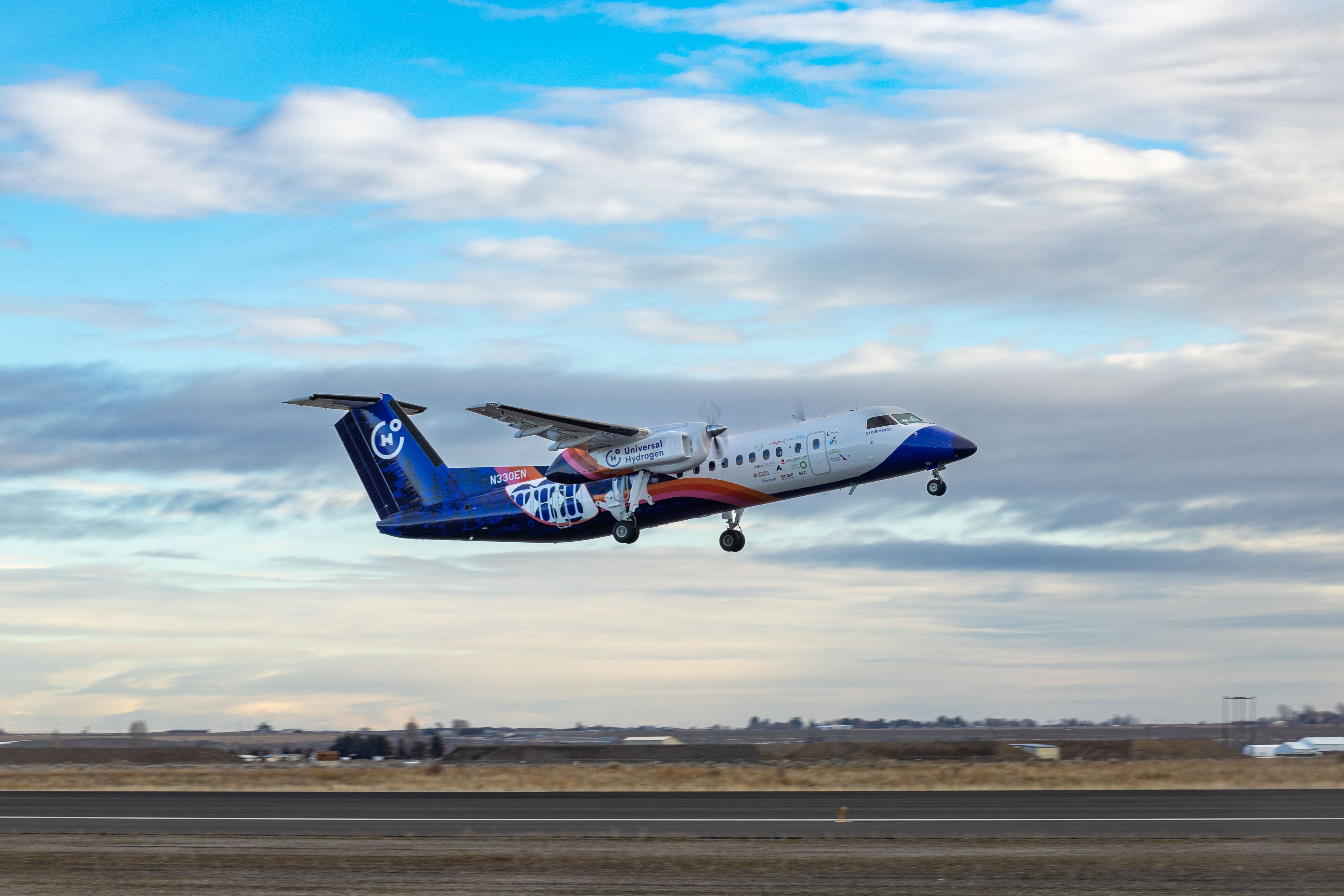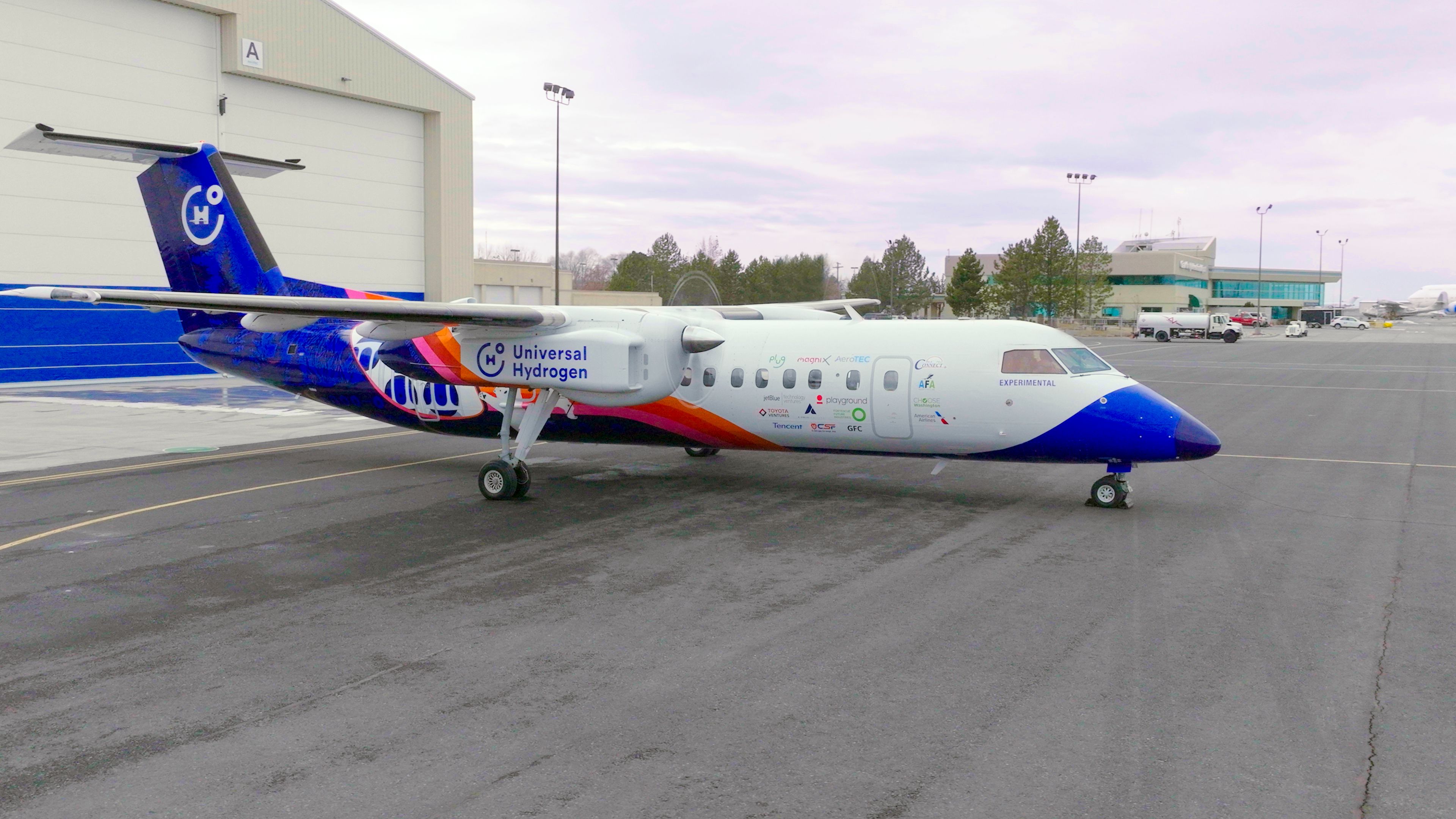A significant milestone has been reached in the pursuit of clean aviation following the first flight of Universal Hydrogen’s hydrogen-electric De Havilland Canada Dash 8, containing the world’s largest hydrogen fuel cell ever to power an aircraft. The Dash 8 completed a 15-minute flight with one of its two hydrogen-powered engines.
Lift off for hydrogen fuel cell Dash 8
The Dash 8 Q300, nicknamed Lightning McClean, took off from Grant County International Airport (MWH), Washington, at 08:41 local time on Thursday morning, reaching an altitude of 3,500 MSL during the 15-minute flight. The engine, a magni650 electric propulsion unit (EPU) powered by a modified Plug Power hydrogen fuel cell system, was developed by electric propulsion firm magniX.
Nuno Taborda, CEO at magniX, commented,
"This is the first hydrogen airplane to be powered by a magniX EPU and we are delighted to be leading the aerospace industry once again. Hydrogen has never enjoyed greater mindshare and we have witnessed many governments laying out ambitious strategies to harness it. Passing this milestone with Universal Hydrogen furthers our mission to accelerate the adoption of zero-carbon flight."
Universal Hydrogen received a special experimental airworthiness certificate from the Federal Aviation Administration (FAA) last month, giving the go-ahead for the milestone test flight. At the controls was pilot Alex Kroll, the company's chief test pilot and former US Air Force test pilot. During the flight, Kroll reduced the throttle on the plane's turboprop engine, enabling it to cruise primarily through hydrogen power. The pilot added, "the airplane handled beautifully, and the noise and vibrations from the fuel cell powertrain are significantly lower than from the conventional turbine engine."
World's largest aircraft hydrogen fuel cell
Along with its two pilots and an engineer, the aircraft carried two large hydrogen tanks containing 30 kg of fuel, with the fuel cell generating up to 800kW of power. magniX heralds its magni650 EPU as "electron agnostic," which enables it to be powered by any electric source and has been used to power smaller aircraft in the past, including Eviation’s nine-seater, all-electric Alice airplane.
Riona Armesmith, Chief Technology Officer at magniX, added,
"Hydrogen fuel cells are an important next step in the electric age of aviation, enabling us to electrify bigger aircraft and to achieve longer ranges. This landmark flight is a crucial step towards reaching that goal. We are very excited for the potential of hydrogen to shape the culture of aerospace."
Crucial engineering work was performed by fellow Seattle-based firm AeroTEC, which helped make this project a reality in less than 12 months, including designing the modified nacelle containing the hydrogen fuel cell.
Discover more aviation news with Simple Flying.
Plenty of support
Many key industry players, including Airbus, GE Aviation, American Airlines, and JetBlue, back universal Hydrogen. Additionally, representatives from Connect Airlines, which placed an order for 75 converted ATR 72-600s and a further 25, were in attendance - Universal Hydrogen has now attracted almost 250 conversion orders from 16 options for customers valued at around $1 billion.
This week's test flight is the first of an expected two-year test program which will initially see hydrogen-powered regional aircraft, including the ATR 72, enter commercial service in 2025. Universal Hydrogen's plans for the future are far more ambitious, with the company eyeing up the successors to popular narrowbodies like the Airbus A320 and Boeing 737 in the foreseeable future.
Paul Eremenko, co-founder and CEO of Universal Hydrogen, said,
"More than half of aviation CO2 emissions today come from the A320 and 737 family of aircraft. Making their successors hydrogen airplanes is a golden opportunity—perhaps the only opportunity—for aviation to get anywhere near meeting Paris Agreement emissions targets without having to curb aviation traffic volumes."
Do you think hydrogen technology will eventually power commercial passenger jets? How far off is the industry from this reality? Let us know in the comments.


